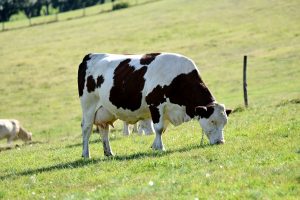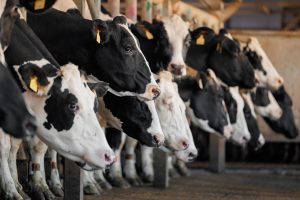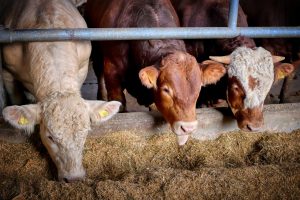Álvaro García
Nutrition during the pre-weaning period plays a decisive role in shaping the health, development, and long-term productivity of dairy calves. One of the most fundamental management decisions during this stage is whether to feed calves whole milk or milk replacer. While both can support adequate growth and health when managed properly, their physiological impacts, long-term consequences, and economic implications differ in important ways.
This article reviews scientific evidence comparing milk replacer and whole milk, highlighting growth performance, epigenetic effects, economic returns, and practical options for low-resource environments.
Nutritional and physiological considerations
Whole milk remains the biological standard for calf feeding. It contains highly digestible milk proteins (casein and whey), along with biologically active components such as immunoglobulins, insulin-like growth factors (IGFs), enzymes, and hormones. These elements support intestinal development, immune defense, and optimal nutrient absorption, especially in the first weeks of life when the calf’s digestive system is immature.
However, raw whole milk also carries risks. If not pasteurized, it can serve as a vector for pathogens including Mycoplasma, Salmonella, and Mycobacterium avium subsp. paratuberculosis. In addition, the nutritional composition of milk may vary with cow health and lactation stage. For larger farms or those with high milk prices, the opportunity cost of feeding whole milk, rather than selling it, can be significant.
Milk replacers, in contrast, offer consistent composition, improved biosecurity, and scalability. High-quality products based on all-milk proteins (e.g., whey protein concentrates or skim milk powder) can closely replicate the digestibility of whole milk. Plant-based proteins such as soy are less expensive but harder to digest in calves under three weeks old and reserved for later stages.
Growth, health, and long-term performance
Controlled studies show that calves fed high-quality milk replacers can achieve comparable weight gain and health outcomes to those fed pasteurized whole milk, provided nutrient intake is equivalent. When well formulated and properly mixed, milk replacers can match or exceed the performance of whole milk, especially in terms of consistency and biosecurity.
Hill et al. (2010) reported that calves fed a high-protein, high-fat milk replacer (28% crude protein, 20% fat) achieved average daily gains (ADG) of 900 g/day, surpassing the 800 g/day observed in calves fed whole milk under the same conditions. In contrast, Bartlett et al. (2006) found that calves fed milk replacers containing soy protein grew more slowly and experienced higher incidence of diarrhea, reinforcing the importance of using all-milk proteins in early life.
Beyond immediate growth and health, early-life nutrition also plays a crucial role in determining future productivity. The first 60 days of a calf’s life influence gene expression through epigenetic programming, affecting mammary development, metabolic efficiency, and reproductive maturity. Soberon et al. (2012) demonstrated that each additional 1 kg/day in pre-weaning ADG was associated with approximately 1,100 liters more milk in the first lactation. These benefits were observed regardless of whether the calves were fed whole milk or milk replacer if the nutritional intake was adequate.
Together, these findings confirm that both short-term and lifetime performance are determined less by the source of nutrition and more by its quality, volume, and consistency.
Economic analysis
Feeding six liters of whole milk per day for 60 days results in 360 liters per calf. At a milk price of $0.35/L, the opportunity cost is $126. Factoring in pasteurization and labor, the total cost may exceed $140 per calf.
In contrast, a high-quality milk replacer fed at 800 g/day (with 12.5% solids) totals 48 kg of powder. At $2.60/kg, the total feed cost is $124.80, with minimal labor and handling costs.
Long-term return depends on ADG and age at first calving. A calf gaining 900 g/day (vs. 750 g/day) may enter the milking herd sooner and yield $200–300 more milk revenue in the first lactation, outweighing slight differences in initial feeding cost.
The table below compares the short-term costs and long-term returns for whole milk versus high-quality milk replacer, using typical price and performance assumptions.
Economic comparison of calf feeding strategies | |||
Feeding strategy | Feed cost ($) | 1st lactation milk gain (L) | Milk value gained ($, $0.35/L) |
Whole Milk | 140 | 500 | 175 |
High-Quality MR | 125 | 1100 | 385 |
Whole milk in low-resource systems: practical realities
In many regions, high-quality milk replacers are scarce, expensive, or inconsistent. Whole milk remains the default option for calf feeding, but its use carries both advantages and challenges:
- Always available → On-farm supply makes it accessible without relying on imports or distribution chains.
- Variable composition → Solids and fat content fluctuate with breed and stage of lactation (e.g., lower solids in Zebu or crossbreds).
- Biosecurity risks → Raw milk may transmit pathogens. In the absence of pasteurizers, boiling or low-heat treatment can reduce risk.
- Opportunity cost → Feeding milk to calves reduces saleable milk. This trade-off depends on local milk prices and marketing access.
- Cultural and market pull → In regions like South Asia and the Middle East, household use or cooperative sales often compete with calf allocation.
- Spoilage in hot climates → Without refrigeration, milk must be fed immediately after milking to avoid bacterial growth.
Bottom line: Whole milk can successfully support calf growth in low-resource settings, provided farmers manage hygiene, adjust for variability, and weigh the opportunity costs against long-term herd productivity
When milk replacers make sense
Milk replacers can be a valuable alternative to whole milk, especially in medium- to large-scale or high-value dairy systems. Their advantages and limits include:
- Consistent composition → Nutrient density and solids are standardized.
- Biosecurity → Eliminates pathogen risk from raw milk (E.g. Salmonella).
- Economic advantage → In areas with high milk prices, replacers often cost less than the opportunity cost of feeding saleable milk.
- Scalability → Large herds standardize calf feeding without depending on milk fluctuation.
- Flexibility → Feeding volumes and solids can be adjusted precisely to match growth goals.
- Limitations in low-resource settings → Import costs, tariffs, and poor distribution can make replacers unaffordable or unavailable. Quality control is also inconsistent in some markets.
Bottom line: High-quality, all-milk protein replacers are effective tools where they are affordable and accessible, but their value depends on local economics and supply chains.
Feeding alternatives in resource-limited settings
In many developing countries, dairy producers face limited access to high-quality commercial milk replacers due to economic and logistical barriers. High import costs, currency instability, tariffs, and weak distribution infrastructure, especially in rural areas, make these products expensive or unreliable.
Even when available, replacer quality can be inconsistent. Poor labeling, improper formulation, or reliance on plant proteins unsuitable for young calves can compromise digestibility, leading to poor growth and increased risk of scours, particularly under suboptimal hygiene.
Under such conditions, locally formulated replacers may offer a practical alternative. The goal is to replicate the nutrient density and digestibility of cow’s milk using safe, accessible ingredients. Though these mixtures lack immune components present in milk, they can still support acceptable growth and early weaning if properly balanced and managed.
Critical formulation principles include:
- Adequate dairy-based protein
- Digestible fats and carbohydrates
- Essential vitamins and minerals
- Strict mixing hygiene and consistent feeding (typically 12–15% solids, fed 2–3 times/day)
However, performance depends heavily on ingredient quality and sanitation. Without careful oversight, the risk of nutritional imbalances and microbial contamination increases. Collaboration with local veterinarians or nutritionists is strongly recommended.
While not ideal, well-designed, and monitored homemade replacers can serve as a viable option when commercial products are inaccessible, helping producers maintain calf growth and survival even in low-resource systems.
Common Ingredients:
- Whey powder or dried skim milk (if available): primary protein
- Coconut or palm oil, animal fat: energy source (must be emulsified)
- Dextrose or lactose: carbohydrate energy
- Soy protein concentrate: acceptable for calves >3 weeks old
- Vitamin-mineral premix includes Ca, P, Mg, Zn, Se, Cu, vitamins A, D, E
- Optional stabilizers: lecithin or mono/diglycerides for fat dispersion
Example Local Formula (per 100 kg dry mix):
- Dried whey or skim milk powder: 60 kg
- Coconut oil or animal fat: 20 kg
- Dextrose/lactose: 10 kg
- Vitamin-mineral premix: 1–2 kg
- Soy protein (optional): up to 10 kg for older calves
Clean water at 40–45°C should be used to mix 125–150 g of powder per liter. Feeding frequency (2–3 times/day), utensil hygiene, and proper mixing are critical. Calves must also receive free access to clean water and a starter ration by Day 3–5.
Utilizing cheese whey in calf feeding programs
In areas with active cheese production, cheese whey may be readily available and inexpensive. While attractive as a low-cost liquid feed, its nutritional limitations and hygiene risks make it unsuitable as a full milk replacer—especially in the first weeks of life.
Whey typically contains 4–5% lactose, ~1% protein, and less than 0.1% fat—making it significantly lower in energy and essential nutrients than whole milk. It should not be fed immediately after colostrum, as young calves require highly digestible protein and fat to support immune function, thermoregulation, and early growth. Feeding whey alone too early can result in diarrhea, stunted growth, and higher risk of disease.
That said, whey can be used strategically after 3–4 weeks of age, when the calf’s digestive system is more developed. It may be:
- Mixed with whole milk or milk replacer to reduce cost.
- Supplemented with added fat and skim milk powder to improve nutrient balance.
- Used in dry form within commercial replacer formulas.
To ensure safety, whey must be fresh, clean, and refrigerated, as they spoil easily and support rapid microbial growth. Composition varies by cheese type and process, so monitoring calf health and adjusting formulations is essential.
In summary, while not suitable as a sole feed, cheese whey can serve as a cost-effective supplemental ingredient—if used correctly, with nutritional fortification and strict hygiene practices.
Conclusion
Feeding strategy during the pre-weaning period is a key driver of calf development and long-term productivity. This review highlights that, when properly formulated and managed, high-quality milk replacers can match or surpass pasteurized whole milk in supporting growth, health, and future milk yield.
The determining factor is not the source but the nutrient density, digestibility, and hygiene of the liquid diet. Early-life gains in average daily gain are strongly linked to first-lactation performance, making adequate intake critical regardless of feeding method.
From an economic and logistical standpoint, milk replacers offer consistent, scalable, and bio-secure advantages, especially when milk has high market value. In low-resource settings, locally formulated replacers and whey may serve as viable alternatives if used with care and technical supervision.
© 2025 Dellait Knowledge Center. All Rights Reserved.









